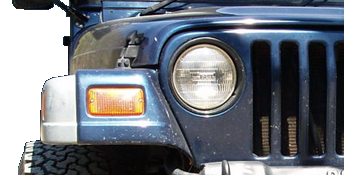Fabrik8
Overcomplicator
- Joined
- May 27, 2015
- Location
- Huntersville
Yes crimping with a proper tool is better. You can solder them and not get a cold joint if you have steady hands. If you pre tin the cable you know it's solid. If I had known hydraulic crimpers were that cheap, I'd have gone that route for speed. I like to quench the bigger lugs so I don't have to hold it steady for so long (which may cause a cold joint but what is visible looks like a nice joint. Cold joints look grainy and dull. All the wiring repairs I do are soldered and you won't change my mind on that, especially on trailers and things exposed to elements. Yes crimps are the de facto standard in the industry, but mainly for speed. I've yet to have any come backs over any wiring repairs I've done, and have seen far more bad crimps than good ones on other people's repairs. I'll omit the twisted wires with wire nuts and twisted wires with electrical tape. Or solid wire in automotive applications.
Proper crimping is generally more reliable then soldering. Soldering is fine for things that don't see hundreds of thousands of miles of use, or for high vibration environments like racecars. You don't like solid wire in automotive applications, but you're essentially turning stranded wire into solid wire by soldering it. You want to solder trailer connections, no problem. A trailer will never see close to the mileage that the average car will, so the solder joints will likely never see enough use to fail.
You're basically creating a very rapid transition from a fairly flexible wire to a pretty rigid solder joint, and that can create a pretty bad stress riser at that point. This will not always fail, depending on how the wire is supported around the joint and the severity of the vibration environment, but it's a lot more likely to fail than a proper crimp connection with a strain relief for the wire insulation and wire weight, etc. You can use almost anything to make an electrical connection if you don't use it long enough for it to fail. If your needs are simple, your environment is easy, and the usage is short, do whatever you feel comfortable with. Then you have the issues of flux corrosion, because you can't really clean flux that wicks down the wire strands and under the wire insulation. Yes, soldering is adequate, but it's not as good as a proper crimp connection. I will say that there are also a lot of industrial connection systems that are not made for high vibration environments, and a lot of those shouldn't be used for automotive use because they can fail. Automotive connection systems are designed specifically for that purpose obviously.
Quenching a solder joint is about the worst thing you can do. Cold solder joints come from lack of proper solder adhesion, due to poor surface conditions or bad temperature control, so you aren't likely to make a cold solder joint from quenching if you're starting out with a good solder joint. But quenching an otherwise adequate solder joint is just asking for trouble, and can create a shear failure instead of a cold joint. Solder has a fairly high rate of thermal expansion, so when you quench it you can have a high rate of shrink in some areas like the surface that get cooled first, and can shear those areas away from the hotter core, or will at least create highly stressed grain boundaries that are very susceptible to fatigue failure. Solder is good at conducting electricity, but it's a very soft metal and its mechanical properties are pretty poor.
I was an electronics technician and then hardware design consultant before I was a mechanical engineer, and I now work with electronics in high vibration environments. I've been around the block a few times with the "solder versus crimp" argument.


